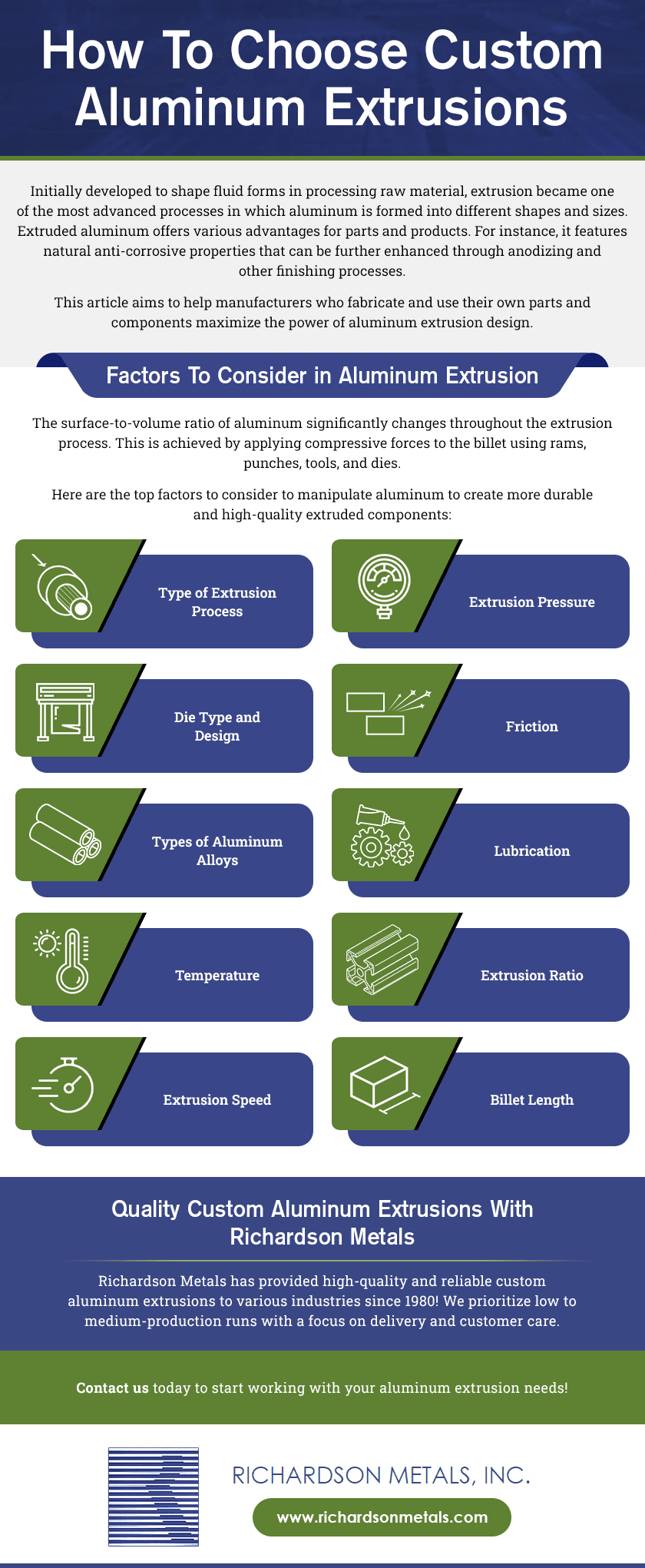Initially developed to shape fluid forms in processing raw material, extrusion became one of the most advanced processes in which aluminum is formed into different shapes and sizes. Extruded aluminum offers various advantages for parts and products. For instance, it features natural anti-corrosive properties that can be further enhanced through anodizing and other finishing processes.
This article aims to help manufacturers who fabricate and use their own parts and components maximize the power of aluminum extrusion design.
Factors To Consider in Aluminum Extrusion
The surface-to-volume ratio of aluminum significantly changes throughout the extrusion process. This is achieved by applying compressive forces to the billet using rams, punches, tools, and dies.
Here are the top factors to consider to manipulate aluminum to create more durable and high-quality extruded components:
Type of Extrusion Process
There are two types of extrusion processes: direct and indirect. Direct extrusion is when the ram and the metal flow in the same direction; indirect extrusion is the opposite. A reliable aluminum extrusion provider can easily differentiate which of the two types is advantageous for fabricating a specific component.
Extrusion Pressure
The pressure needed to start metal flowing and reduce friction at the interfaces between the billet, die, and the chamber is exceeded by the extrusion pressure. It varies between 800 MPa and 1200 MPa.
Friction
In custom aluminum extrusion, friction between the billet and die, or chamber and die, is crucial. To manage the metal flow and lower the amount of power needed for compression, friction is removed or minimized.
Die Type and Design
The elements that form the metal are called dies, and their designs dictate the mechanical operation of the metal during extrusion. Dies for extrusion can be solid, semi-hollow, or hollow.
Lubrication
Extruding high-strength aluminum alloys calls for lubrication to help the metal as it is distorted as the die and the billet slides up against the chamber. Lubricants used for the process are a mixture of glass powder, graphite, and oil.
Types of Aluminum Alloys
Different aluminum alloys call for various extrusion settings, as aluminum alloys are categorized into series according to the primary alloying element. For instance, Alloy 6063 and Alloy 6061 are popular material choices for extruding aluminum alloys because they provide a high-quality finish.
Temperature
Extruding aluminum in high temperatures — between 375 °C (705 °F) and 500 °C (932 °F) — is known as “hot extrusion.” High temperatures improve the flow of the metal, resulting in flawless extrudates. However, high-temperature extrusion can be disadvantageous in some applications. Thus, you must work with a manufacturing partner who can advise on the best techniques per project.
Extrusion Ratio
The billet and die opening cross-sectional area ratio defines the extrusion ratio. Larger deformation results from a higher extrusion ratio. Therefore, a higher pressure must be applied to the aluminum material to decrease the ratio.
Extrusion Speed
Extrusion speed is defined as how quickly metal passes through the die. The extrusion speed should be balanced to keep the metal at the proper temperature. For example, high extrusion pressures are needed for faster extrusion speeds, which raise exit temperatures. On the other hand, slower speeds give the temperature plenty of opportunity to flow and disperse.
Billet Length
The length, shape, and extrusion ratio of the extrudate are constrained for a given billet diameter by the billet length. Additionally, the billet length impacts the necessary extrusion pressure, as the needed extrusion pressure increases with billet length.
Quality Custom Aluminum Extrusions With Richardson Metals
Richardson Metals has provided high-quality and reliable custom aluminum extrusions to various industries since 1980! We prioritize low to medium-production runs with a focus on delivery and customer care.
Contact us today to start working with your aluminum extrusion needs!

